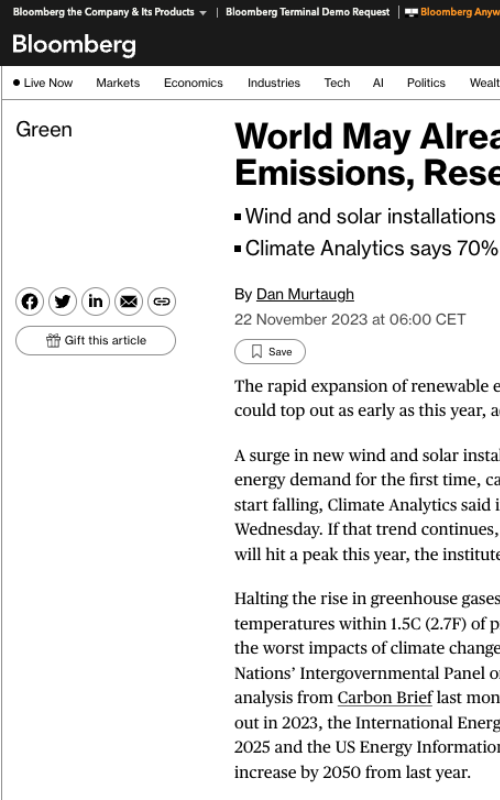Media coverage
Share

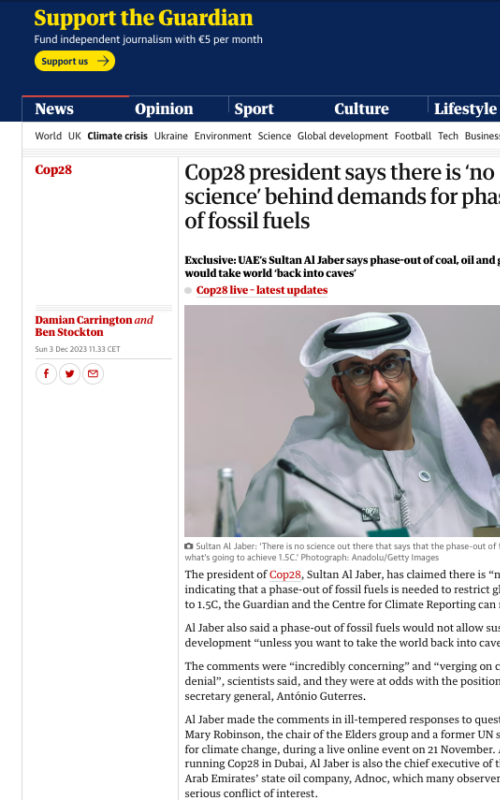
The Guardian
“This is an extraordinary, revealing, worrying and belligerent exchange." Bill Hare told The Guardian. "‘Sending us back to caves’ is the oldest of fossil fuel industry tropes: it’s verging on climate denial.”
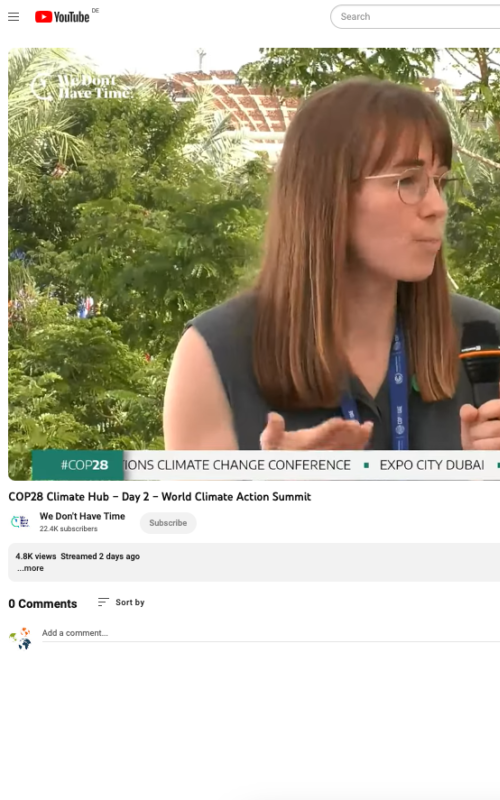
We Don't Have Time
"We have all the reliable info available, we just need the government to step up and respond to the science," Claire Fyson on the fossil fuel phase out on the We Don't Have Time broadcast at COP28.
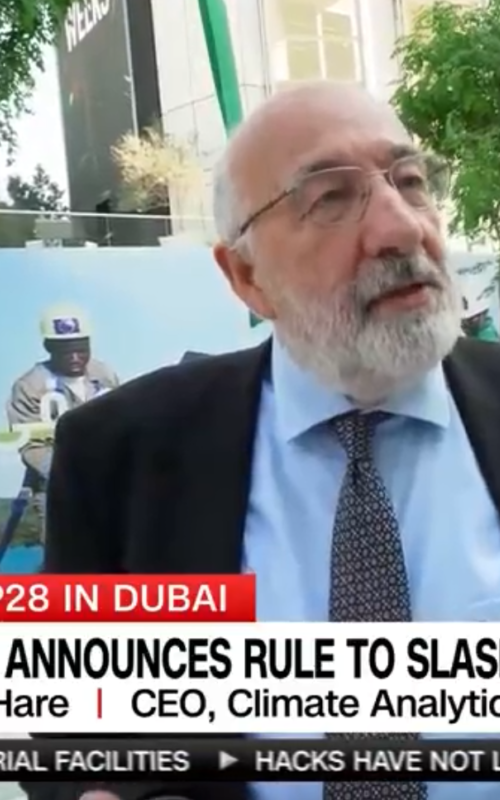
CNN
Climate Analytics CEO Bill Hare speaks to CNN about what expanding oil production in the UAE and the US means for the climate negotiations at COP28.
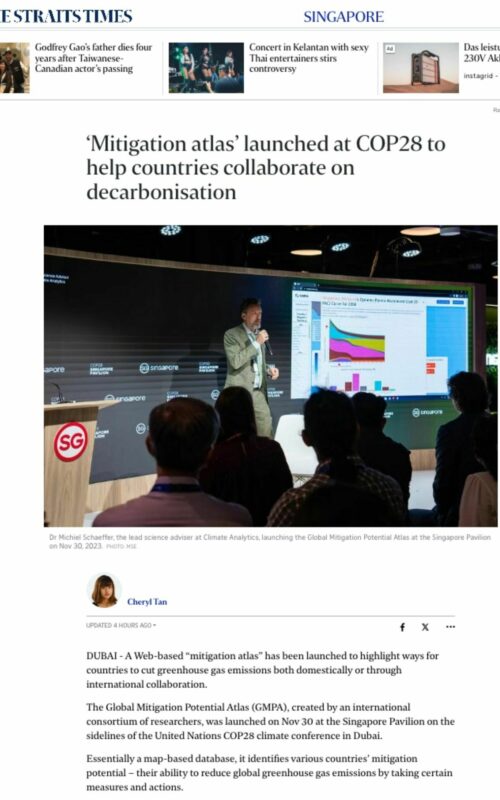
The Straits Times
Dr Michiel Schaeffer said a key objective of the Global Mitigation Potential Atlas is to channel more finance, capacity building and tech solutions for emissions mitigation into developing countries by fostering international cooperation.

AP News
Bill Hare told AP that the UAE has pushed for a less stringent “phase down” instead of a stricter “phase out” of fossil fuels. He called the phase down phrase “window dressing” for increased oil and gas drilling.

CNN
Claire Fyson told CNN the momentum is in favour of a green transition, but "we’re still in very dangerous territory".
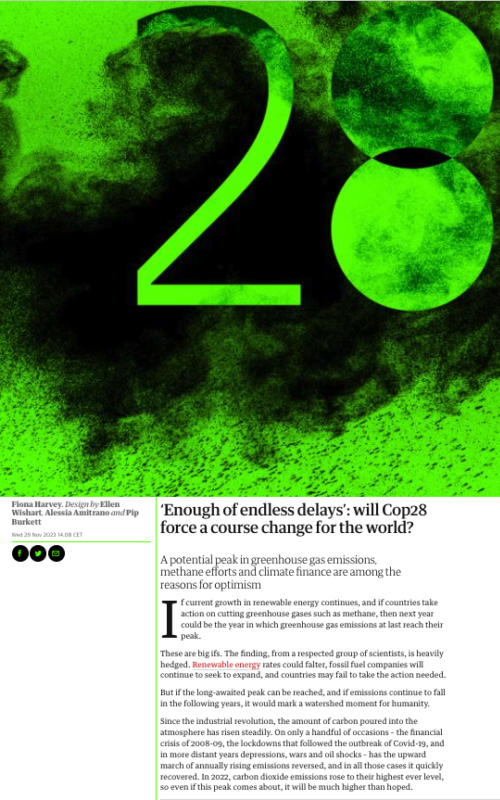
The Guardian
Fiona Harvey writes about our report — When will global greenhouse gas emissions peak? — in an interactive piece for The Guardian.
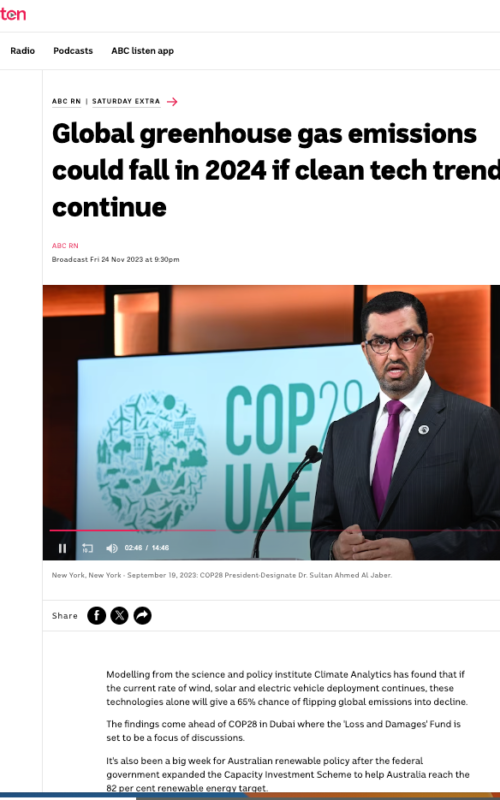
ABC
“2023 could be the peak year of emissions”, Bill Hare spoke to the ABC about the COP28 agenda and new research analysing when greenhouse gas emissions are likely to to start falling.
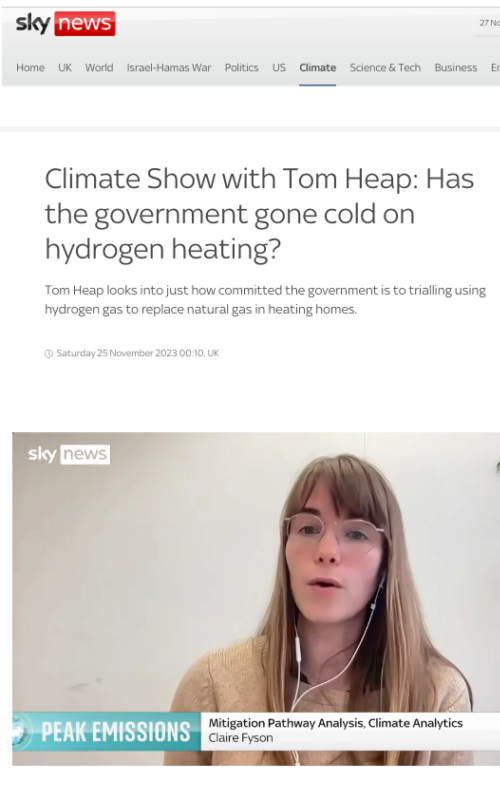
Sky News: The Climate Show
"It's absolutely crucial that we get governments altogether collectively committing to stop backing the fossil fuel economy and really accelerate the transition toward renewables," Claire Fyson tells Tom Heap what is required for greenhouse gas emissions to peak in 2023 (minute 13.30–14.30).
